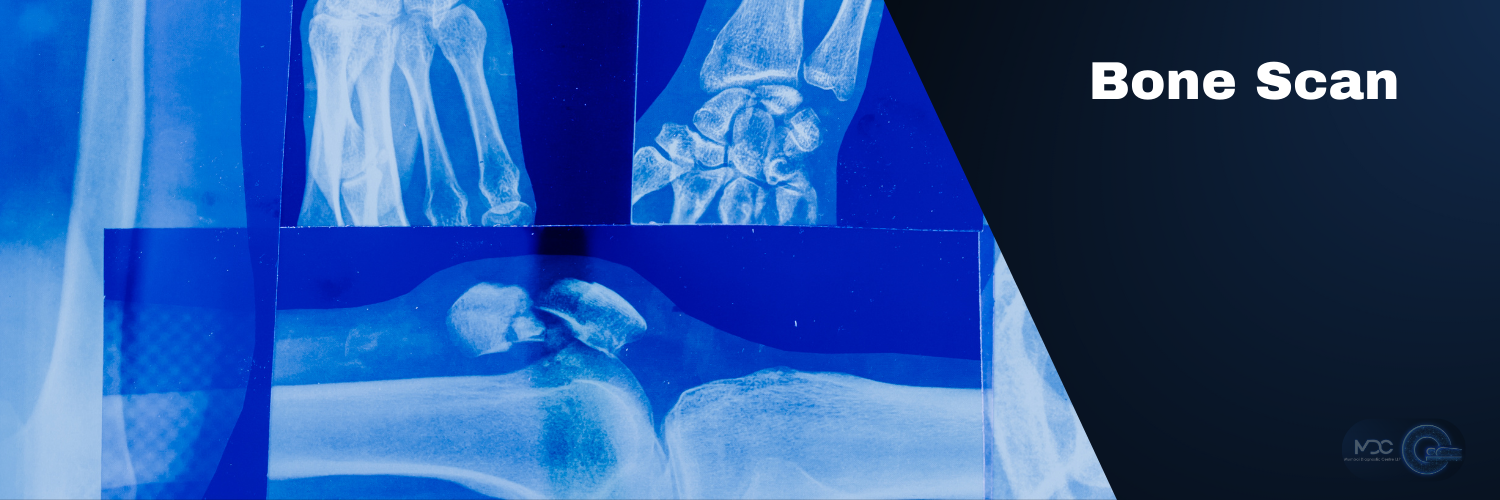What is Bone Scan?
A bone scan helps detect problems in your bones much earlier than a regular X-ray.
What Happens During the Scan?
- A small amount of radioactive tracer is injected into your vein.
- It travels through your blood and gets absorbed by your bones.
- The scan then checks how your bones absorb the tracer.
What the Scan Shows:
- Cold spots (dark areas): Could mean poor blood flow or some cancers.
- Hot spots (bright areas): May point to arthritis, fractures, infections, or bone tumors.
Before the Scan
No Special Prep Needed
- You don’t need to fast or follow any strict instructions.
- After the injection, drink plenty of water—it helps.
For Women
- Not sure if you’re pregnant? Take a test first. If pregnant, the scan is usually not done.
- Breastfeeding? Express and store milk in advance. You can safely feed your baby the next day.
What to Wear
- Comfortable, loose clothes.
- Please avoid jewelry.
What to Bring With You
- Doctor’s note or referral for the scan.
- Full medical file, including:
- Medicines
- Allergies
- Any past treatments
- All past scan reports, X-rays, or CDs—especially for fractures, falls, or cancer.
- Latest blood sugar and creatinine reports (or get them done at our center).
- One family member or friend, if needed.
- Some light, home-cooked food for after the scan.
How Long Does It Take?
- Total time: Around 4 to 5 hours.
- After injection: Wait 1 to 1.5 hours for the tracer to reach your bones.
- Scan itself: Takes about 15 to 30 minutes.
After the Scan
- You can eat, drink, and take your regular medicines.
- Stay for a short 30-minute observation after the scan.
- Avoid close contact with children and pregnant women for the rest of the day.
- The tracer leaves your body through urine and stool—usually within 10–12 hours.
- Drink plenty of water to flush it out faster.
